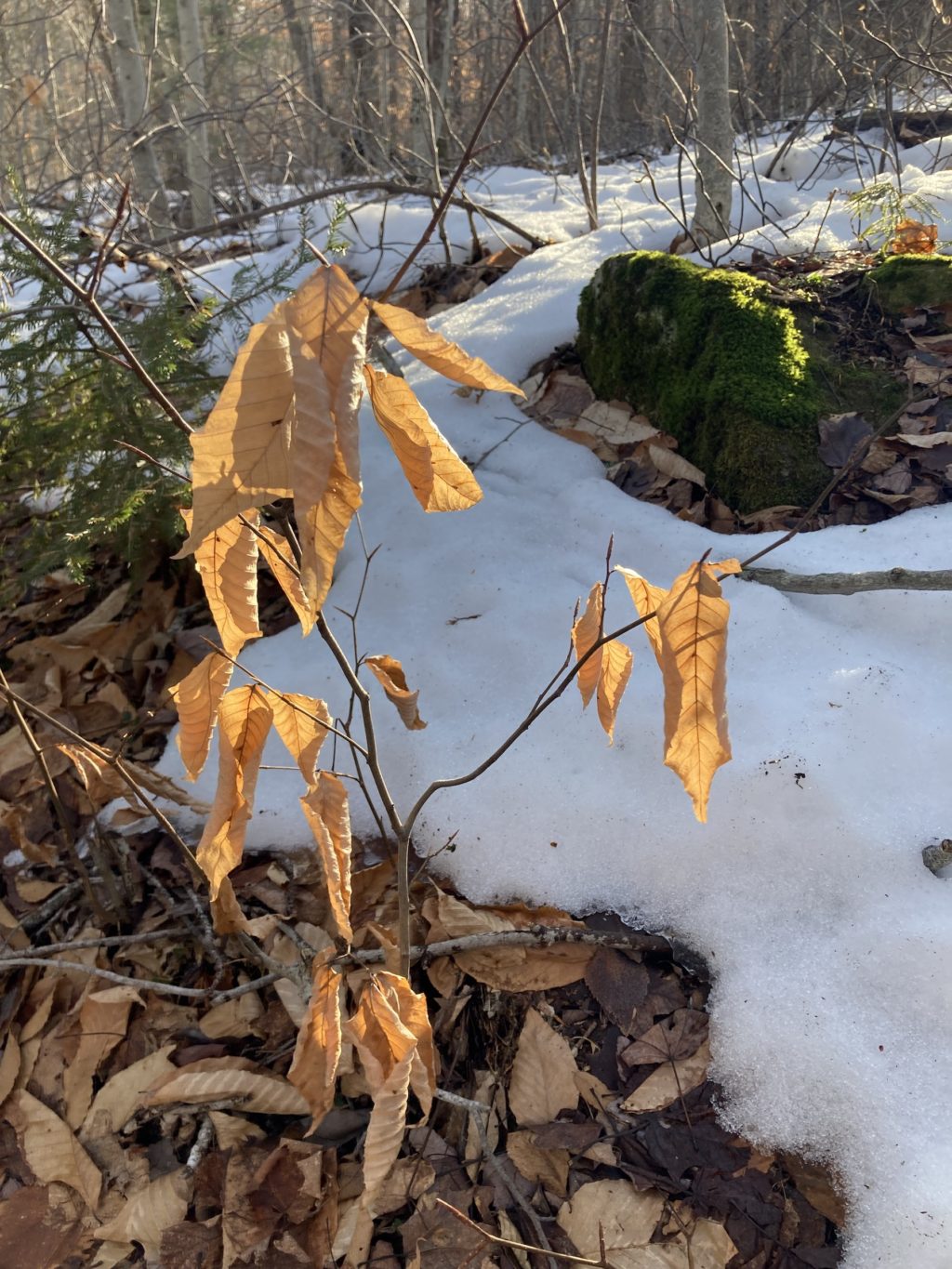Almanac: The Mystery Of Marcescence

Defiantly marcescent beech leaves shine golden in late afternoon light. Photo: Stephen Braun
The trail in the October Mountain State Forest near Lee was sloppy in the spring-like conditions after the turn of the New Year. The mild weather made hiking more like rock-hopping along an active stream bed — not bad, exactly, but not exactly relaxing, either.
My friend and I did a 4-mile loop, somehow missing a junction with the Appalachian Trail that would have taken us across the spine of a ridge we hoped to ascend. (The AT, for all its fame, is not nearly as well-marked in spots as one might imagine.) But any trail, even a boggy one, beats a sidewalk, and the one we followed offered all of the subtle beauties available on winter rambles, among them a stand of American Beech backlit by late-afternoon sun.
Beech trees, along with some species of oak and hop hornbeam, display a puzzling trait: they stubbornly refuse to shed their leaves in autumn. This tendency for the leaves of some deciduous trees to remain attached to their stems is called marcescence (mar-CESS-enss). It’s a very odd trait given abundant evidence that trees with leaves still on are at much higher risk of injury or death from ice storms, high winds, or heavy snows. That’s part of the advantage of deciduousness, the other being the avoidance of water loss in winter via transpiration through the leaves.
So what gives? It’s nice of beech trees to provide humans with some visual pleasure in winter and to provide us with the gentle, papery sound of dry leaves rustling in the wind while most other trees are leafless and silent, but isn’t this suicidal? Or, at least, unnecessarily risky?
The short answer: nobody knows. It might be that the clinging dry leaves deter moose, deer, and other browsers from munching on leaf buds and tender branches. This might explain why marcescence is usually observed either on young trees or on the lower branches of older trees. But it’s hard to imagine that a hungry deer would really be thwarted by anything as flimsy as a dead leaf or two. Another theory is that by holding on to their leaves until spring, when they drop just before new leaves bud out, the trees maximize the potential of the leaves to provide nutrients and mulch when the growing season starts. This theory, however, doesn’t account for the effects of wind, which blows the leaves all over the place, or the fact that dead leaves actually provide very little in the way of nutrients, regardless of when they fall.
It’s possible that marcescence doesn’t confer any advantages. It may be a trait that is actually doing a very slow exit stage left. Many studies demonstrate that traits not being actively maintained by natural selection become smaller or less functional over time. Broadleaf trees in the tropics and warm climates often retain their leaves year-round (except in places prone to droughts). Perhaps beech, some oaks, and other trees showing marcescence up here in chilly New England are just the last stragglers in the march to true deciduousness, hanging on to a trait that was formerly adaptive but is now vestigial. Maybe 50,000 years from now beech trees will all be as naked in winter as their brethren maples, hickories, birch, and ash. For now, though, we get to enjoy the sight and sound of marcescent leaves and savor the mystery they present to our inquisitive minds.
Almanac is a regular Indy column of observations, musings, and occasional harangues related to the woods, waters, mountains, and skies of the Pioneer Valley. Please feel free to comment on posts and add your own experiences or observations.
